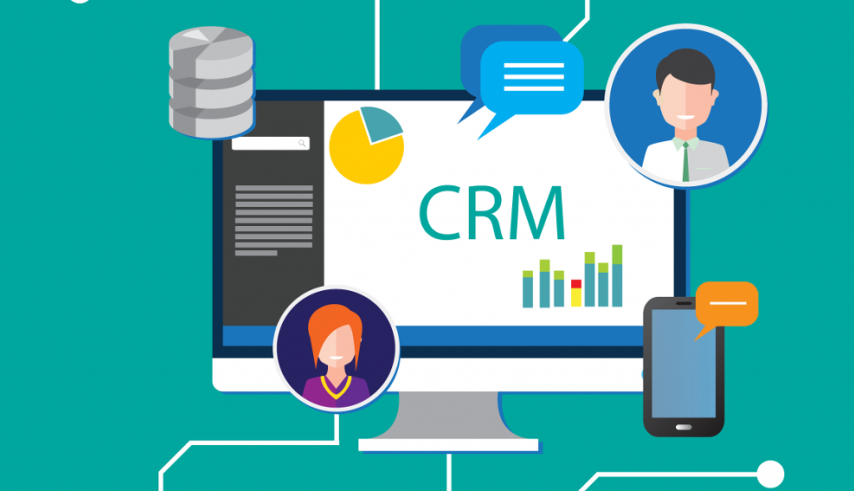Today’s organizations use multiple software apps, including email clients, accounting tools, and social media dashboards. If you use these tools spontaneously and separately, it can create data silos, full of cut off data that sales teams don’t have an access to, which leads to using incomplete customer profiles and limits your CRM’s ability of tracking customer journey.
On the other hand, using CRM as an integrated hub for multiple applications helps to make it fully adaptable. At any time, you can install or uninstall any integration from CRM according to your needs.
Check out these 5 essential CRM integration types that every business needs.
- Email and calendar platforms
Regardless of which email client your sales reps are using (Gmail, Outlook, etc.), a lot of valuable customer data (contacts, decisions, events, etc.) is collected in their inboxes. This information should not remain either forgotten or isolated: everyone who manages deals should be able to access it.
Email & Calendar integration tools help your team successfully collaborate, achieve your goals faster and close more deals.
If you use Salesforce, we bet you’ve heard about Salesforce Inbox, a tool that combines your email, calendar, and client management system to give you a seamless sales experience. Intuitive and easy to use, it saves you hours every week and helps you work smarter, but it has its limitations and sometimes doesn’t work correctly.
If you’re Looking for a decent alternative, check out Revenue Inbox, a powerful enterprise-class yet easy-to-use CRM email integration. It seamlessly integrates your Outlook/Gmail with Salesforce, helping you to gather new insights on every email you’re working with and customize what Salesforce objects and fields you want to see.
Here are six main reasons to choose Revenue Inbox over Salesforce Inbox:
- it automatically captures data according to your needs, offering multi-directional synchronization of various items like emails, attachments, threads, calendar events, and contacts with Salesforce. Enjoy your customized data capture preferences, Salesforce rules, blacklists, and more;
- you can use Revenue Inbox’s fully customizable sidebar to get valuable insights on every email you get and get your Salesforce data updated right from your inbox. You can display Salesforce views, fields, and objects, create records easier with data prefill, and link custom objects with Salesforce records;
- you’ll love using your new calendars: send your availability, integrate your booking schedule and save appointments to Salesforce;
- the feature is made for scale and designed for Enterprise: the tool natively supports Partner Community Licenses, Multi-Geo Exchange, Office 365, or on-premise deployments;
- enjoy high-class customer service team, that will work with you until the software is seamlessly utilized within your org;
- make the best of better deployment flexibility: deploying on private or on-premise servers as well as free deployment assistance to make sure your instance of Revenue Inbox fully meets your needs.
- Accounting/billing
Using accounting tools and CRM independently requires you to manually enter all transactions. Make the process simpler and integrate advanced accounting solutions with the CRM you use.
Any operation that occurs through the integrated platform updates the associated accounts on the go. You get your balances always current, and have enough time to confirm in several financial records when closing multiple deals simultaneously.
You can incorporate your invoices, quotes, expense statements, and order forms with your contact and organization details without having to switch screens, and store shared documents in the CRM cloud storage, and let others easily access them. Quickbooks Online or Xero are good online accounting software solutions.
- Sales quotes/proposals
The dumbest thing you can do when you’re about to close a deal is to waste your time looking for the right documents.
Use advanced software tools that will help you to create perfect sales quotes, proposals, and other client-facing documents and integrate them with your sales CRM. This will allow you to link organization- or contacts-related documents in respective action schedules or store shared documents in CRM. For that, check out solutions like PandaDoc, Dropbox, Octiv, or Qwilr.
- Help desk
If your business is growing and you already use (or just about to do that) a customer service solution, it’s a good idea to integrate it with your CRM. This way, you always have the customer context (interactions or purchase history, segmentation details, customer value, etc.) at your fingertips when processing requests.
In addition, such systems are able to group all tickets and messages within one platform, which makes it possible to optimize the process and reduce client waiting time (your agents no longer have to constantly switch between various platforms to deal with web requests).
Check out solutions like Happyfox, Kayako, Zendesk, and Freshdesk.
- Social media
CRM data is essential for your social sales, marketing, and social customer service. Make sure your CRM can connect to the social networks you use the most.
We recommend not using solutions that offer integration with all existing social networks; they should integrate at least with Facebook and Twitter and provide real-time notifications, the ability to post messages within your CRM, create contacts, leads, or tickets from direct messages.
Check out solutions like Agorapulse, Hubspot, Pipedrive, Zoho Social, and, of course, Salesforce.












